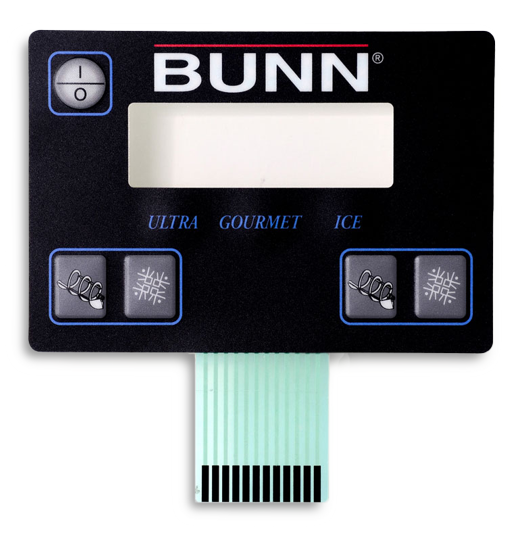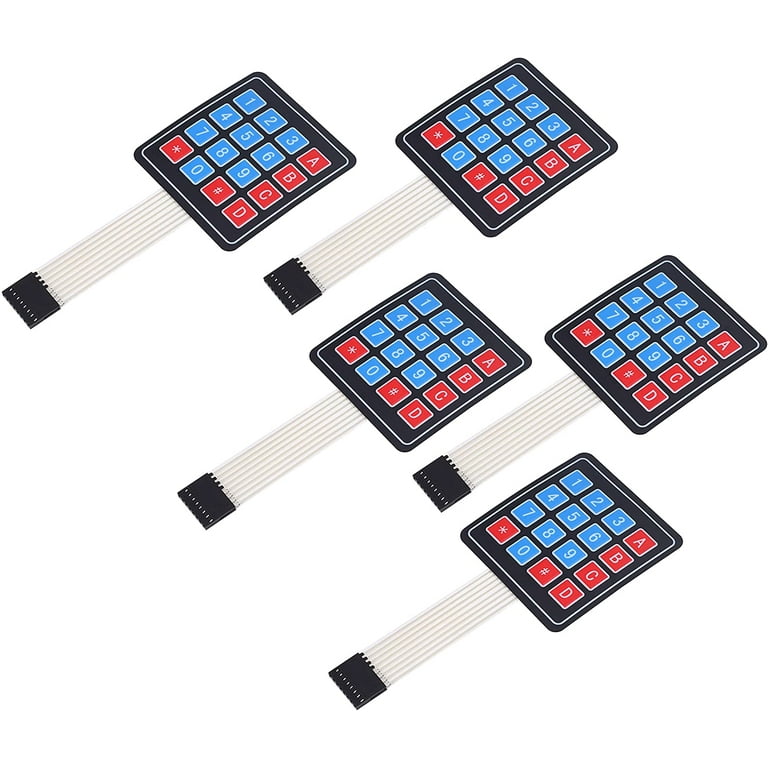Recognizing the Significance of Membrane Switch in Modern Electronic Devices and Their Applications
Membrane changes function as an essential component in modern-day electronics, using a reliable interface for customer interaction. Their adjustable and light-weight nature makes them suitable for a variety of applications throughout diverse markets. Understanding their crucial parts and advantages can supply insights into their expanding importance. As innovation remains to advance, the development of Membrane switches over raises concerns concerning their future applications and layout innovations. What exists ahead in this dynamic field?

What Are Membrane Switches?
Membrane buttons are vital components in contemporary electronic devices, functioning as customer interfaces that assist in communication in between users and gadgets. These buttons contain a number of layers, consisting of a graphic overlay, a glue layer, and a circuit layer, all of which job together to develop a functional and sturdy interface. The design allows for a flat, inconspicuous service that can be tailored concerning size, shape, and visual appearance, making them suitable for different applications, from consumer electronic devices to clinical tools. The tactile responses offered by Membrane switches improves customer experience, while their resistance to dust and dampness makes them optimal for testing environments. Membrane switches can include features such as backlighting and published graphics, further broadening their use. Their versatility and toughness make them a recommended selection in industries where dependability and simplicity of usage are paramount, eventually adding to the smooth procedure of modern-day electronic devices.
Trick Components of Membrane Changes
While different elements add to the capability of a membrane layer switch, 3 key layers play significant roles in its design and operation. The top layer, usually made from a long lasting polymer, works as the user interface for user communication, frequently featuring printed icons and graphics. Underneath this is the spacer layer, which maintains the required distance between the top layer and the circuit layer. This spacer layer guarantees that the switch turns on just when pushed, protecting against accidental inputs. Finally, the circuit layer contains conductive traces that complete the electrical circuit when the leading layer is dispirited. These traces can be made from various products, consisting of copper or silver. Together, these components create a reliable and durable gadget that is small and versatile, suitable for a wide range of digital applications, from family home appliances to medical tools. Comprehending these key components is essential for appreciating the overall capability of Membrane switches.
Benefits of Utilizing Membrane Switches

Membrane Switch Manufacturing Refine
Understanding the Membrane switch manufacturing procedure exposes the elaborate actions included in producing these vital elements. The process normally begins with the layout phase, where requirements and layouts are created utilizing specialized software application. Following this, the graphic overlay is published on an adaptable substratum, usually utilizing high-resolution printing strategies to ensure clarity and precision.Next, the glue layers are used, which offer to bond the various parts with each other. The circuit layers, made from conductive inks or products, are then printed onto a different substratum. These layers are meticulously straightened and laminated flooring to create a functional switch.After assembly, the buttons undertake testing to verify functionality and longevity. Quality assurance actions are implemented throughout the procedure to recognize and fix any defects. The finished Membrane buttons are packaged and prepared for circulation, ready to satisfy the demands of modern-day electronic applications.
Applications of Membrane Switches Over in Various Industries
Membrane switches are increasingly utilized throughout numerous industries, particularly in medical equipment and consumer electronic devices. In the clinical area, they give reliable control interfaces for devices that require precise operation. Similarly, in customer electronic devices, these buttons improve customer interaction by offering receptive and streamlined user interfaces.
Medical Tools Control
Countless modern-day clinical gadgets use Membrane switches for structured operation and boosted individual interaction. These buttons give a reliable, durable user interface for a range of applications, consisting of analysis equipment, patient surveillance systems, and surgical instruments. Their personalized styles allow for details formats that can accommodate the one-of-a-kind requirements of healthcare specialists, making sure intuitive navigating and effective accessibility to necessary features. Furthermore, Membrane switches are immune to pollutants, making them suitable for sterilized environments. The responsive feedback they offer can boost user self-confidence, decreasing the threat of errors during crucial medical treatments. Overall, the integration of Membrane buttons in medical devices greatly contributes to boosted operational efficiency and individual security in healthcare setups.
Customer Electronic Devices Interfaces
In the domain of consumer electronics, Membrane buttons play an important duty in enhancing individual interfaces throughout a broad variety of tools. These switches are indispensable to products such as push-button controls, microwaves, and pc gaming consoles, offering a straightforward and efficient interface. Their style browse this site permits a seamless combination of graphics and capability, enabling manufacturers to produce sleek, modern looks without endangering usability. Membrane switches are additionally known for their sturdiness, commonly holding up against considerable usage and direct exposure to different ecological problems. Additionally, they can incorporate features like backlighting and tactile feedback, further boosting the customer experience. As consumer demands for innovative yet instinctive user interfaces expand, Membrane switches continue to be an essential component in advancing electronic device functionality.
Layout Factors To Consider for Membrane Changes
Designing effective Membrane switches calls for mindful interest to different elements that influence both capability and customer experience. One crucial consideration is the choice of materials, as they can impact durability, responsive comments, and aesthetic allure. Choosing an appropriate adhesive is important for assuring long-lasting attachment and resistance to ecological factors.In addition, the format and style of the switch have to fit user communication, with button sizes and spacing maximized for ease of usage. The consolidation of graphics and labeling should focus on clarity and presence under various lights conditions.Consideration of electric attributes, such as actuation force and button sensitivity, will certainly enhance the responsiveness of the Membrane switch. The design should suit making procedures to assure cost-effectiveness and prompt manufacturing. Overall, a well-thought-out layout enhances both the user and the performance experience of Membrane switches in contemporary electronics.

Future Patterns in Membrane Switch Modern Technology
As technology remains to evolve, Membrane switches are poised to incorporate brand-new innovations that will boost their functionality and application in various areas. One significant trend is the consolidation of durable and flexible materials, which will enhance the life expectancy and dependability of these buttons. Improved surface area appearances and personalized graphics are additionally prepared for, permitting even more instinctive customer interfaces.Moreover, the combination of wise modern technology, such as touch-sensitive surface areas and haptic responses, is anticipated to boost individual interaction, making Membrane switches a lot more receptive and appealing. Additionally, advances in printed electronic devices will certainly make it possible for a lot more intricate wiring within thinner accounts, additionally broadening design possibilities.Sustainability will additionally play an essential duty in future advancements, as producers discover eco-friendly products and manufacturing processes. Overall, these fads will certainly guarantee that Membrane switches over continue to be important and relevant in a increasingly electronic and interconnected globe.
Frequently Asked Inquiries
Just How Do Membrane Switches Contrast to Typical Mechanical Buttons?
Membrane changes offer benefits over conventional mechanical buttons, consisting of decreased dimension, lighter weight, and enhanced resilience. They typically give a sealed surface, boosting resistance to dust and dampness, making them excellent for diverse applications.
What Products Are Typically Made Use Of in Membrane Switch Construction?

Can Membrane Changes Withstand Extreme Environmental Issues?
Membrane buttons can stand up to severe environmental problems, depending upon their layout and materials. High-quality buildings frequently include resilience versus temperature changes, humidity, and direct exposure to chemicals, making them appropriate for numerous go to the website demanding applications throughout markets.
The Length Of Time Do Membrane Switches Normally Last Before Failure?
Membrane switches commonly exhibit a life-span varying from 1 to 10 million actuations, depending on aspects such as use frequency, environmental problems, and manufacturing quality. Routine maintenance can expand their longevity and operational integrity considerably.
Are Membrane Changes Personalized for Specific Applications?
Membrane switches are undoubtedly personalized for particular applications. They can be customized in dimension, layout, and functionality, permitting suppliers to meet unique user requirements and improve item aesthetic appeals while preserving functional effectiveness and toughness. Membrane buttons are necessary parts in modern-day electronic devices, offering as individual interfaces that facilitate interaction in between tools and customers. The responsive comments offered by Membrane switches boosts customer experience, YOURURL.com while their resistance to dust and moisture makes them perfect for challenging environments. The unification of graphics and labeling need to focus on clearness and presence under various lights conditions.Consideration of electric qualities, such as actuation force and button sensitivity, will boost the responsiveness of the Membrane switch. Boosted surface structures and adjustable graphics are additionally anticipated, permitting for more intuitive user interfaces.Moreover, the integration of clever technology, such as touch-sensitive surfaces and haptic responses, is expected to enhance individual interaction, making Membrane switches extra responsive and interesting. Membrane switches offer benefits over traditional mechanical buttons, consisting of decreased dimension, lighter weight, and enhanced resilience.